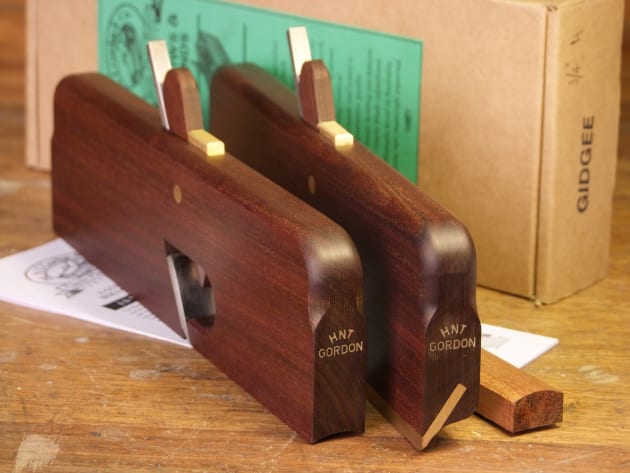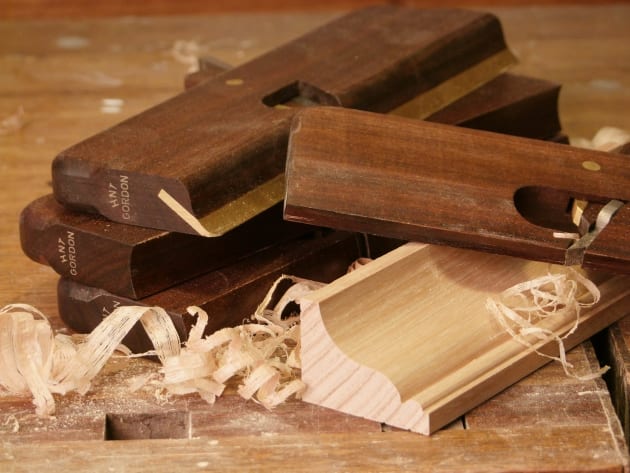HNT Gordon Moulding Planes
Hollow and snipe bill plane. Note the brass ‘boxing’.
Review and photos: Troy McDonald
Writing an article on handworking mouldings in issue 88 of Wood Review magazine provided an opportunity to trial a number of moulding planes from the stable of respected Australian hand toolmaker HNT Gordon.
The planes provided represented a very useful starting set of moulders and included a pair of both 1/4" and 3/4" hollow and rounds (H&Rs), in addition to a single snipe bill plane. As a rough guide, a vintage No.4 moulding plane roughly equates to a 1/4" Gordon plane while a No.10 approximates a 3/4".
The planes were all made of gidgee, the stability and density of which should ensure several lifetimes of trouble free use. The finish on the planes was immaculate and it is a tribute to Terry Gordon how beautifully presented these planes are. All arrived with instructions on use and sharpening, and were ready to use straight out of the box. The planes irons are set at a pitch angle of 60° which makes them perfectly suited to fine finish work on hardwoods.
Above: The planes cut beautifully straight out of the box.
When compared with traditional moulding planes there are some minor differences in the HNT product. Firstly, the stock is slightly shorter in length and significantly lower in profile. Secondly, the iron on the HNT is parallel in thickness, set slightly askew and much thicker than the tapered irons on traditional planes.
Boxwood has been replaced with brass in areas prone to wear or breakage and the wedge design is also quite different with a fine angle at the base of the wedge to direct shavings clear of the throat. Some of these are very useful improvements in design.
In use, the planes felt a little cramped in my hand possibly because I am accustomed to holding a standard sized plane. I put the planes to use on a number of sample mouldings and the more I used the planes, the less I noticed their smaller size. In terms of performance, I have to say the H&Rs cut cleaner than any moulding plane I have ever used. The thick iron, set with a slight skew and tight mouth produced a beautiful clean finish.
The instructions included a number of innovative techniques to assist with care and maintenance of the planes. Clearly these techniques have resulted from years of trial and error and would be a great help to first time users who are typically daunted by the method required to sharpen moulding plane irons.
The combination of gidgee and brass makes for a beautiful plane but I think their overall appearance could be improved with a more traditional or flowing design for the wedge. This is a very small criticism for what are exceptional planes to use.
You can buy the planes separately or in pairs. The price will be a barrier to some, however if you are new to moulding planes they will allow you to get started without getting lost in the complexities of tuning a century old plane. If you don’t have time to restore vintage planes you’ll also see them as good value. In use, I think they’re wonderful tools.
Planes supplied for review by HNT Gordon, www.hntgordon.com.au




